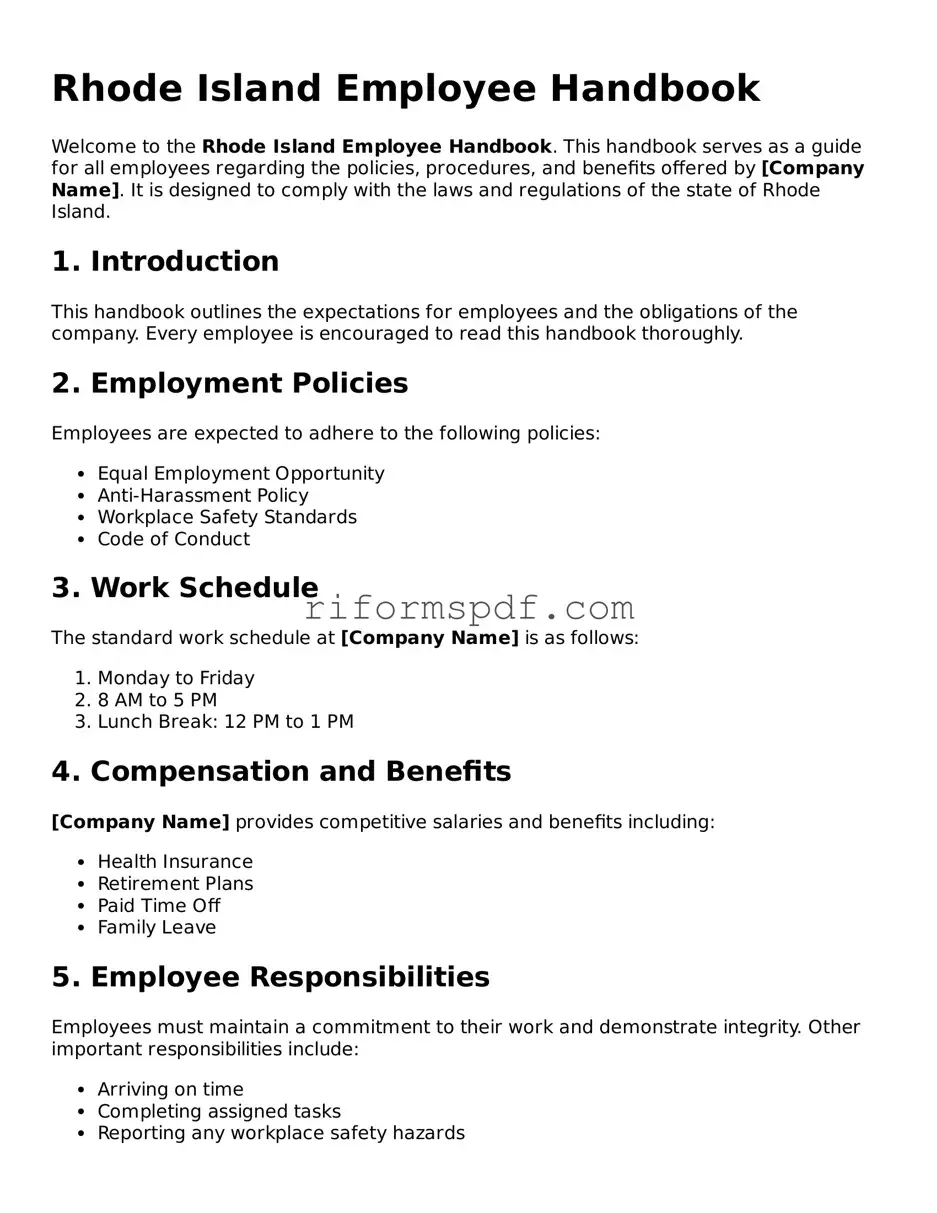Printable Employee Handbook Form for Rhode Island
The Rhode Island Employee Handbook form serves as a crucial document that outlines the rights, responsibilities, and policies of employees within a company. This form provides essential guidance on workplace conduct, benefits, and procedures, ensuring that both employees and employers are aligned on expectations. By establishing clear communication through this handbook, organizations foster a positive work environment and promote compliance with state regulations.
Launch Editor
